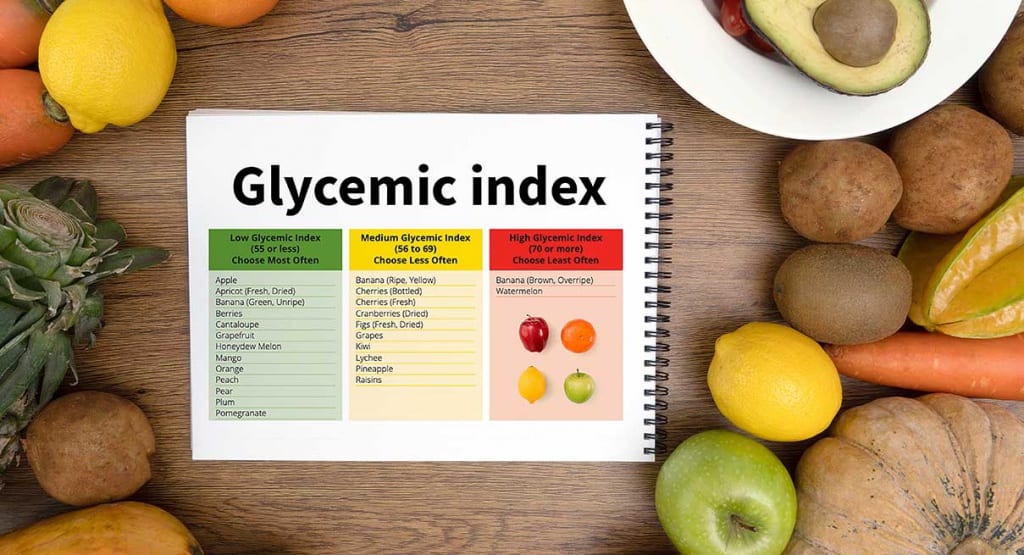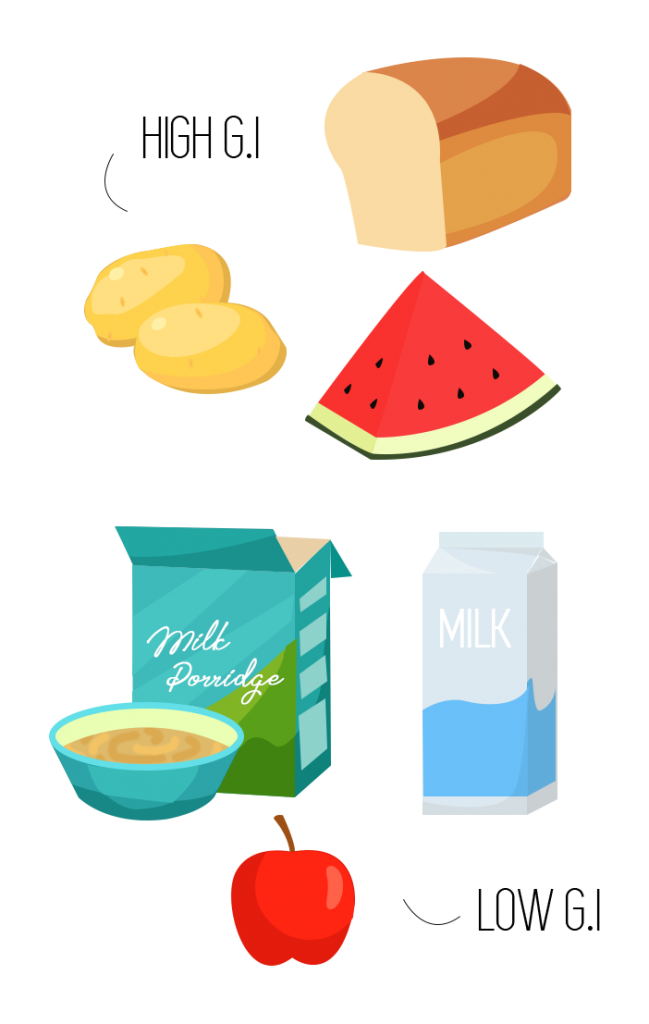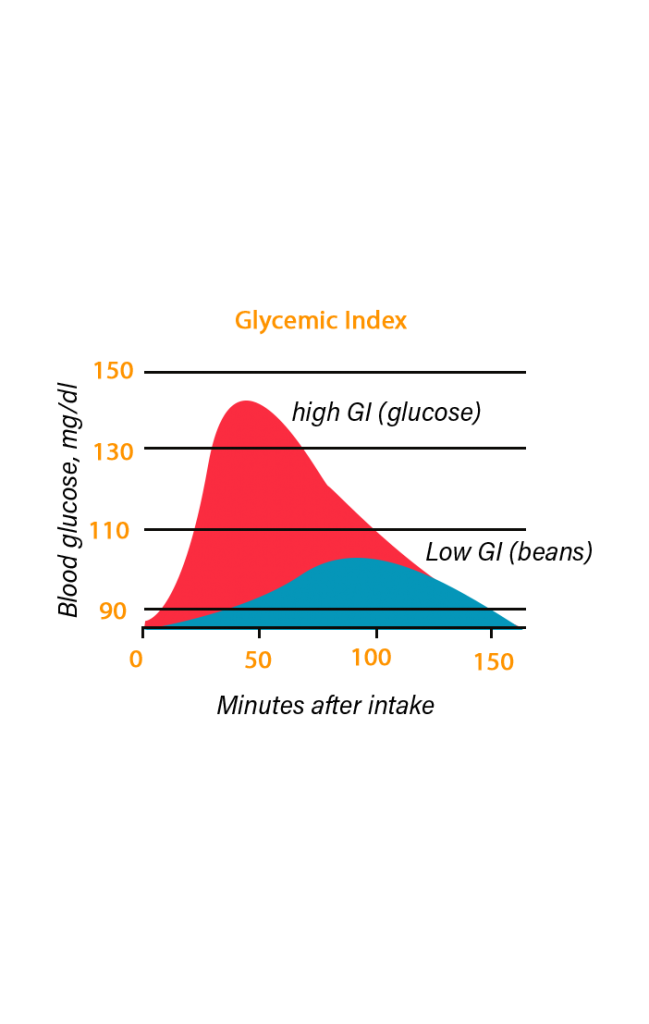
What is G.I?
What is the glycaemic index you say? Who is it for? Let’s cut to the chase.
The glycaemic index (G.I) is a measurement of how different carbohydrate foods affect blood glucose levels. This index is highly important for those who’d like to control their blood sugar.
How does it work?
 Basically, all foods are ranked from 0 -100 according to the effect they have on blood glucose. Foods which are high in G.I have a score of 70 upwards. Medium foods are ranked between 55 and 70, where lower foods are 55 or less.
Basically, all foods are ranked from 0 -100 according to the effect they have on blood glucose. Foods which are high in G.I have a score of 70 upwards. Medium foods are ranked between 55 and 70, where lower foods are 55 or less.
This index helps people who’d like to keep their blood sugar levels in check figure out which food to include in their diet and which foods to avoid or watch their consumption levels.
What’s the difference in high & low GI foods?
 Although there are foods that are considered to be in the same food groups (for example watermelon and apples – in the fruit category) it doesn’t mean that they are the same in G.I levels. Foods with a higher G.I are those that are quickly broken down into sugars and absorb into the bloodstream which in turn results in a rapid peak in blood glucose levels. In comparison to Low G.I foods, which are low in fat which is great for people concerned about blood sugar management. The reason is they produce a gradual rise in blood sugar & insulin levels – which is due to their slower digestion, which means the glucose in the foods are released gradually rather than a rapid peak.
Although there are foods that are considered to be in the same food groups (for example watermelon and apples – in the fruit category) it doesn’t mean that they are the same in G.I levels. Foods with a higher G.I are those that are quickly broken down into sugars and absorb into the bloodstream which in turn results in a rapid peak in blood glucose levels. In comparison to Low G.I foods, which are low in fat which is great for people concerned about blood sugar management. The reason is they produce a gradual rise in blood sugar & insulin levels – which is due to their slower digestion, which means the glucose in the foods are released gradually rather than a rapid peak.
How can it help my diet?
 Having a low-GI diet could actually benefit your health in the long run even for those are in good shape. A low GI diet can fill you up and keep you satisfied for longer. It helps maintaining healthy cholesterol levels. Obviously, it helps manage blood glucose levels. It also can support mental clarity, sustain energy levels AND support skin health.
Having a low-GI diet could actually benefit your health in the long run even for those are in good shape. A low GI diet can fill you up and keep you satisfied for longer. It helps maintaining healthy cholesterol levels. Obviously, it helps manage blood glucose levels. It also can support mental clarity, sustain energy levels AND support skin health.
How do I use the GI?
Well, we now know WHAT GI is but HOW do we use it? Something to note is that the glycaemic index alone should not be your guide in selecting what to eat. The total amount of proteins, carbohydrate, fat, fibre and salt content of foods are also incredibly important! Something you should watch for is fat content. As you will notice that a lot of foods which have a low GI can also have high-fat content which is not ideal as it can help attribute to the development of heart disease and nobody wants that! So pick out some foods from the lower end of the GI spectrum and mix it with other ingredients which are in the medium to high range but keep in mind to watch your sugar levels and eat balanced meals.







